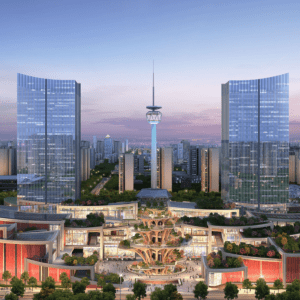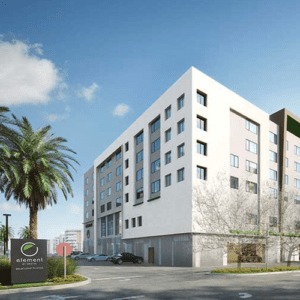 Australia is on target to reach its target of AU$115 billion in overnight spend in tourism by 2020, led by a high performing hotel sector averaging occupancies close to 70 per cent year round.
Australia is on target to reach its target of AU$115 billion in overnight spend in tourism by 2020, led by a high performing hotel sector averaging occupancies close to 70 per cent year round.
With the UNWTO reporting international arrivals to Oceania (including Australia) up 7 per cent in the first four months of 2017, tourism will remain a high performing sector Ð along with gas, agribusiness, international education, and wealth management Ð making Australia a Ôlucky’ country for tourism growth.
That is the assessment of Bryon Merzeo, consultant for Deloitte’s Tourism, Hospitality and Leisure industry group.
Mr Merzeo notes that, according to a Tourism Australia survey, Australia ranks number one on scenery, sight-seeing, being financially Ôworth travelling to’, and is an exciting place for conferences.
He says the inbound tourism boom is being egged on by the soft Australian dollar still only valued at around US$0.78 cents. With Australia perceived as relatively good value, international visitors trips are expected to increase 6.9 per cent per annum for the next three years. Leading source markets will be India (arrivals expected to grow at 12 per cent per year), China and Indonesia (10 per cent), and USA (4 per cent). At the same time, Deloitte forecasts domestic trips to rise 3.4 per cent per annum until 2020.
The result is that growth remains strong across many sub sectors of the travel industry, notably into Australia’s state capitals, which are seeing a hotel building boom. These gateway capitals are also benefiting from more cruise ships arriving, more direct flights being added from overseas markets, (Qantas will soon fly London to Perth direct), and continued high demand from overseas tourists.
However, there are disparities and growing pains, says Bronwyn White, strategist and co-founder of MyTravelResearch.com. Ms White says she is concerned about inadequate dispersal of tourism dollars beyond Australia’s visitor hot spots.
She believes tourists visiting friends and relatives, especially those from Commonwealth countries such as India, should be encouraged more.
With Tourism Australia no longer responsible for promoting Australia to its home market, local authorities and councils have to reach out to domestic and international travellers.
ÒMany upcountry local authorities and councils need better financial planning, tourism investment support and marketing guidance to really get their share of the tourism dollar,Ó said Ms White.
To get their share, MyTravelResearch.comÊrecommends that upcountry destinations in Australia be digital ready, embrace content marketing, fully understand who’s travelling to their area, take infrastructure planning and zoning seriously, and make service a number one priority.
Even after addressing these issues, labour supply and skill levels will be a challenge. With a hotel construction boom underway Ð there are over 125 new properties in the pipeline across the country Ð MyTravelResearch.com tourism industry members wonder where the workers will come from to sustain the hotel and tourism boom.
ÒWe don’t have enough people in training,” said one MyTravelResearch.com member.
“Migration pathways are being reduced and we’re in a building boom. So where will the staff come from?Ó
Mr Merzeo notes that Austrade had identified the challenge and has commissioned tourism labour force surveys.
Labour and room supply notwithstanding, Mr Merzeo says, ÒWe are in a fantastic place with a lot of positive growth signs. Everyone seems to love Australia.Ó
Want to keep up to date with industry news? Click here to subscribe toÊeHotelier’s dailyÊe-newsletter.


 Australia is on target to reach its target of AU$115 billion in overnight spend in tourism by 2020, led by a high performing hotel sector averaging occupancies close to 70 per cent year round.
Australia is on target to reach its target of AU$115 billion in overnight spend in tourism by 2020, led by a high performing hotel sector averaging occupancies close to 70 per cent year round.


















